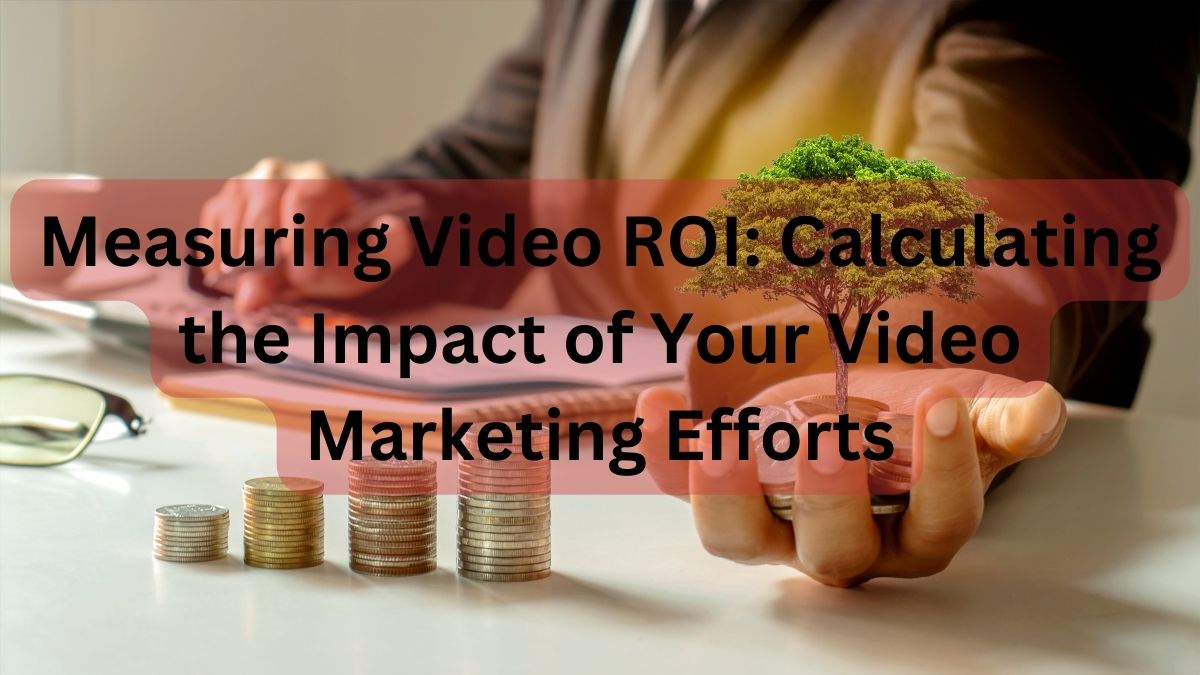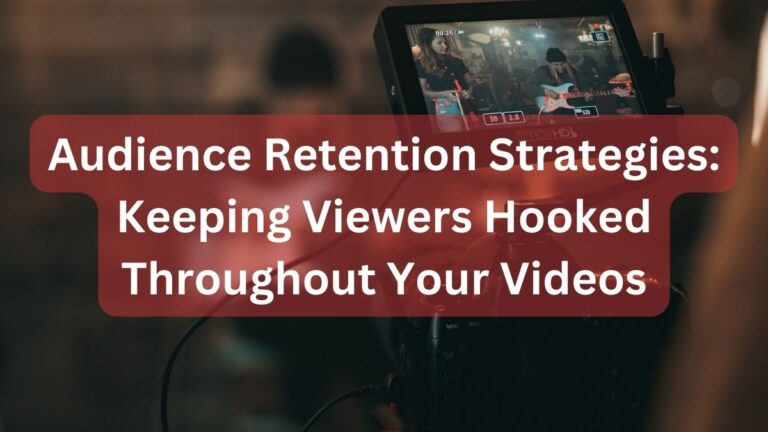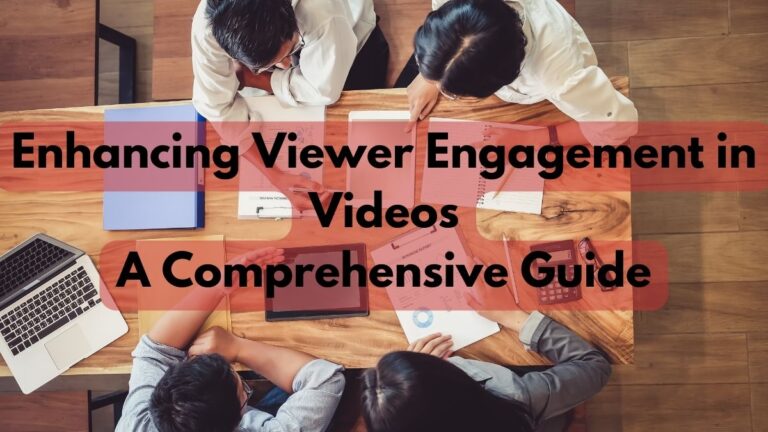Measuring Video ROI: Calculating the Impact of Your Video Marketing Efforts
In an era dominated by digital content, video marketing has risen to the forefront of advertising strategies. It’s dynamic, engaging, and, when done right, immensely effective. But in this fast-paced digital world, how can you be sure that your video marketing efforts are not just creating a buzz, but also delivering a tangible return on investment (ROI)? Do you want to learn the basics of measuring video ROI?
Understanding ROI in the Context of Video Marketing
To grasp the significance of measuring video ROI, let’s start by defining it. ROI, or Return on Investment, is the holy grail of marketing metrics. It quantifies the profitability of an investment relative to its cost. For video marketing, ROI delves deeper, taking into account the unique nuances of this medium.
As Jeffrey Gitomer, a renowned sales expert, puts it, “ROI is not just about dollars and cents; it’s about the results you achieve and the value you create.”
Why Measuring Video ROI is Crucial
Why should you care about measuring ROI for your video marketing campaigns? The reasons are compelling.
- Budget Allocation: Efficient budget allocation is paramount for any business. Without measuring video ROI, you risk overspending on videos that aren’t delivering results, or underspending on those that are.
- Data-Driven Decisions: Data is king in today’s marketing landscape. Measuring video ROI provides data-driven insights that can help you fine-tune your video marketing strategies, ensuring you’re not just shooting in the dark.
- Effective Campaign Assessment: Without ROI measurement, how can you objectively gauge the effectiveness of your video campaigns compared to other marketing strategies? You need to know what’s working and what isn’t.
Preparing for ROI Measurement: Setting Clear Objectives
Before diving into the world of ROI measurement, it’s essential to set clear, measurable objectives for your video marketing campaigns. What do you want to achieve? Some common video marketing objectives include:
- Brand Awareness: Introducing your brand to a wider audience.
- Lead Generation: Capturing potential customers’ interest.
- Sales Conversion: Turning leads into paying customers.
Without clear objectives, measuring video ROI becomes akin to searching for treasure without a map.
Key Metrics to Measure Video Performance
Now that we’ve laid the foundation, let’s explore the key metrics you should be measuring to determine the ROI of your video marketing efforts.
Engagement Metrics
These metrics provide insights into how well your audience is interacting with your video content.
- View Count: The total number of times your video has been viewed.
- Watch Time: The total amount of time viewers have spent watching your video.
- Engagement Rate: This includes likes, shares, and comments, indicating how engaging your content is.
Keep in mind that not all views are created equal. A video with a million views but no engagement may not be as effective as one with fewer views but higher engagement.
Conversion Metrics
Conversion metrics reveal how well your video content is driving viewers to take action.
- Click-Through Rate (CTR): The percentage of viewers who clicked on a link or CTA in your video.
- Conversion Rate: The percentage of viewers who completed a desired action (e.g., signing up, making a purchase) after watching your video.
- Sales Generated: The revenue directly attributed to your video marketing efforts.
These metrics are essential for tracking the bottom-line impact of your videos on your business.
Reach Metrics
Reach metrics help you understand the extent of your video’s exposure.
- Unique Views: The number of individual viewers who watched your video.
- Impressions: The number of times your video was displayed to users.
- Share Rate: The percentage of viewers who shared your video with their network.
A video that goes viral can significantly boost your reach, but remember, reach alone doesn’t equate to ROI.
Retention Metrics
Retention metrics reveal how well your video retains viewers’ attention.
- Average Percent Viewed: The average percentage of your video that viewers watch.
- Video Completion Rate: The percentage of viewers who watch your video to the end.
High retention rates indicate that your content is captivating and keeps viewers engaged.
Feedback Metrics
Feedback metrics provide qualitative insights into audience sentiment.
- Like-to-Dislike Ratio: The ratio of likes to dislikes on your video.
- Comments Feedback Analysis: An analysis of the comments left on your video, including sentiment analysis.
These metrics help you understand how your audience perceives your content.
Tools and Platforms to Aid in Measuring Video ROI
The good news is that you don’t need to embark on the journey of video ROI measurement alone. Numerous tools and platforms offer robust analytics to help you gain insights into your video performance.
- Platforms like YouTube, Vimeo, and Facebook provide built-in analytics dashboards. You can track views, engagement, and more directly on these platforms.
- Third-party tools like Vidyard, Wistia, and Google Analytics offer more advanced analytics capabilities, allowing you to dive deeper into your video performance.
- Integration with Customer Relationship Management (CRM) systems can provide a holistic view of how video marketing impacts your sales pipeline and customer relationships.
By leveraging these tools and platforms, you can gather the data needed to measure your video ROI effectively.
Calculating the ROI for Video Marketing
Now, let’s get into the nitty-gritty of calculating video ROI. ROI calculation involves three key steps:
Formula Overview: The basic formula for calculating ROI is:
[ \text{ROI} = \left( \frac{\text{Net Profit from Video Campaign} – \text{Cost of Video Production and Promotion}}{\text{Cost of Video Production and Promotion}} \right) \times 100\% ]
To break this down, you need to:
Break Down Costs: Identify and quantify the costs associated with your video marketing efforts.
- Production Costs: These include expenses related to equipment, crew, talent, post-production, and any other costs incurred in creating the video.
- Distribution Costs: Distribution costs cover ad spend, sponsored content, and promotional expenses.
Estimate Profits: Determine the profits generated from your video marketing campaigns.
- Attributing Sales to Video Campaigns: To estimate profits, you need to attribute sales directly to your video marketing efforts. This can be achieved through tracking links, unique discount codes, or custom landing pages.
- Estimating Long-Term Value: Consider the long-term value your video marketing efforts bring, such as customer lifetime value. A satisfied customer may continue to make purchases over time.
Let’s put this into perspective with a real-world example.
Case Study: A Real-World Example of Measuring Video ROI
Imagine you run an e-commerce business that sells handmade jewelry. Your objective is to increase sales through video marketing. Here’s a condensed case study of your journey:
- Objective: Increase jewelry sales through video marketing.
- Strategy: You create a series of product showcase videos, tutorial videos on jewelry care, and behind-the-scenes videos showcasing your artisans’ craftsmanship.
- Execution: These videos are shared on YouTube, Instagram, and your website.
- Metrics Tracked: You diligently track engagement metrics, conversion metrics, and sales generated.
- Results Achieved: After three months, you notice a 30% increase in sales directly attributable to the videos. Engagement metrics show high likes, shares, and comments.
- ROI Calculation: By comparing the net profit from video-generated sales to the cost of video production and promotion, you’re able to calculate a positive ROI.
This case study underscores the value of video marketing when executed effectively and emphasizes the significance of diligent tracking and measurement.
Challenges in Measuring Video ROI and How to Overcome Them
While video ROI measurement is crucial, it’s not without its challenges. Here are some obstacles and ways to address them:
- Complex Attribution: In today’s multi-channel digital landscape, attributing sales to a single video can be tricky. Overcome this by using tracking links or unique promotional codes exclusive to your videos.
- Algorithmic Changes: Platforms like YouTube and Facebook often change their algorithms, affecting metrics. Stay updated on these changes and adjust your strategies accordingly.
- Short-Term vs. Long-Term Metrics: It’s vital to recognize the difference between immediate results and long-term value. Focus on both short-term metrics (like sales) and long-term metrics (like customer lifetime value).
Best Practices for Maximizing Video ROI
To wrap up, here are some best practices to ensure you get the most bang for your buck:
- Invest in Quality: A well-produced video can differentiate your brand and elevate your message.
- A/B Test Content: Test different versions of your video to see which performs best.
- Tailor for Platforms: What works on YouTube might not work on Instagram. Tailor your content for each platform.
- Iterate Based on Feedback: Continuously monitor performance, gather feedback, and iterate.
Conclusion
In the words of advertising legend David Ogilvy, “If it doesn’t sell, it’s not creative.” As such, measuring video ROI is non-negotiable for any brand aiming to make the most of its video marketing investments.
References
- YouTube Analytics
- Gitomer, Jeffrey. The Sales Bible. Wiley, 2015.
- Ogilvy, David. Ogilvy on Advertising. Vintage, 1985.







